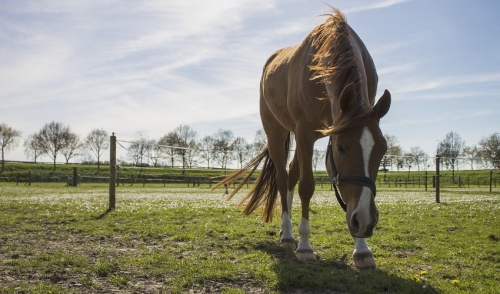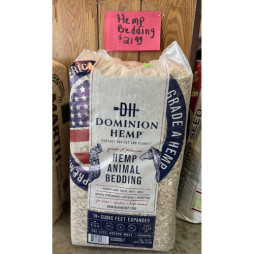{article.name}
Stay Informed
How to Prevent and Minimize Problems When Introducing Horses to Spring Pastures

- Share this:
- Share on Facebook
- Pin on Pinterest
- Tweet on Twitter
For some horses, the advent of spring means that the source of forage changes from hay to fresh grass. If this is the case, the horse owner should take care to minimize the risk of laminitis as horses are exposed to fresh pastures.
Why can fresh grass cause laminitis in horses? During the process of photosynthesis, plants manufacture sugars that are either used for metabolic processes such as growth, or are stored as polysaccharides such as starch or fructan. The storage form of the sugars depends on the plant species. In certain situations, such as the warm sunny days and chilly nights that we see in the spring and the fall, the plants use fewer sugars for growth, and therefore store more as polysaccharides. This can cause problems for horses, especially when the sugars are stored as fructan, because fructan does not appear to be digested in the horse’s upper gut (where starch is digested and absorbed), but instead passes into the hindgut where it is fermented by microbes. It is this fermentation of fructan that appears to be a trigger factor for colic and/or laminitis, similar to a grain overload in horses. The fermentation of fiber carbohydrates in the hindgut is normal, and does not cause digestive disorders in the horse. Other environmental conditions that can affect the amount of polysaccharide storage in plants include drought stress, duration and intensity of sunlight, salinity (salt content) of soil, and overall health of the plant. Again, some species of grass, including cool season grasses, tend to store sugars as fructan, while others, the warm season grasses, tend to store sugars as starch and are less likely to cause problems.
How then do we manage pastures to minimize the risk of laminitis? Horses that are kept on pasture year-round usually adjust to the new grass as it grows. Nature does a fairly good job of making the pasture change gradually. The problems usually occur when horses have been confined and fed a hay and grain diet during the winter, and are then abruptly turned out on the lush green pasture in the spring. Further, horses that have been kept up through the winter may overeat when turned out because of the palatability of the lush green foliage. This sudden change in the diet, especially when it includes a rapid influx of the unfamiliar fructan into the hindgut, may trigger digestive upset.
There are several ways to prevent or minimize problems when introducing horses to spring pastures. Feeding hay immediately before turn-out may help keep horses from overeating, since they are less likely to overeat on an already full stomach. Restricting grazing time will also help minimize risks. A suggested schedule is: thirty minutes of grazing once or twice a day on the first day of grazing; then increase grazing time by 5-10 minutes per day until the horses are grazing 4-6 hours per day total. At this point, they have adapted to the green grass.
Special Offers



Comments